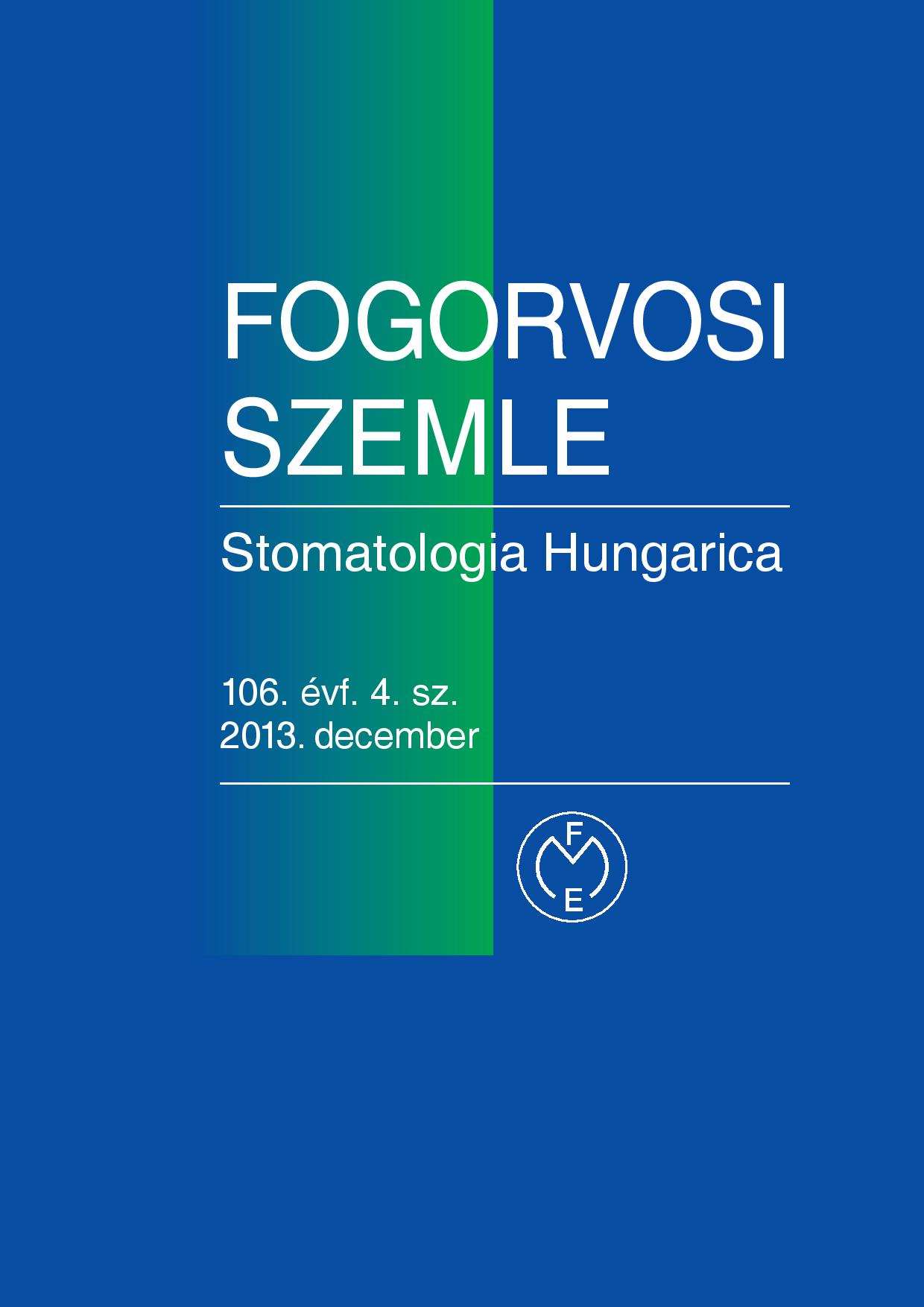Comperative study of implant surface characteristics
Abstract
The osseointegration between the implant and its‘ bone environment is very important. The implants shall meet the
following requirements: biocompatibility, rigidity, resistance against corrosion and technical producibility.������������ �����������In our present
study surface morphology and material characteristics of different implants (Denti Bone Level, Denti Zirconium
C, Bionika CorticaL, Straumann SLA, Straumann SLA Active, Dentsply Ankylos and Biotech Kontact implant) were
investigated with scanning electron microscopy and energy-dispersive X-ray spectroscopy.
The possible surface alterations caused by the manufacturing technology were also investigated. During grit-blasting
the implants’ surface is blasted with hard ceramic particles (titanium oxide, alumina, calcium phosphate). Properties
of blasting material are critical because the osseointegration of dental implants should not be hampered. The physical
and chemical features of blasting particles could importantly affect the produced surfaces of implants.
Titanium surfaces with micro pits are created after immersion in mixtures of strong acids. On surfaces after dual acidetching
procedures the crosslinking between fibrin and osteogenetic cells could be enhanced therefore bone formation
could be directly facilitated on the surface of the implant.
Nowadays there are a number of surface modification techniques available. These can be used as a single method or
in combination with each other. The effect of the two most commonly used surface modifications (acid-etching and gritblasting)
on different implants are demonstrated in our investigation.
Copyright (c) 2021 Authors

This work is licensed under a Creative Commons Attribution 4.0 International License.


.png)




1.png)



